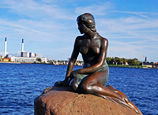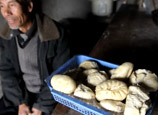
Although China’s economic growth rate hit a 13-year low in 2012, foreign banks remain optimistic about the Chinese economy’s growth potential, given the slow U.S. economic recovery and persistently sluggish eurozone economy.
A large amount of overseas capital has flowed into the country’s stock and foreign exchange markets in order to share the “dividend” of its economic recovery and reform.
Almost all foreign banks, which expressed worries about the possible hard landing for the Chinese economy last year, have raised their forecasts for China’s economic growth this year to over 8 percent.
DBS Bank predicted that driven by domestic demand, the Chinese economy may grow 9 percent this year.
Deutsche Bank also said that the country’s economic growth rate may rise to 8.5 percent in the second half of this year, and peak at 9 percent in the first half of 2014.
Wang Tao, chief China economist for the United Bank of Switzerland, attributed China’s economic recovery to increasing infrastructure investment, declining home inventories, and improving corporate earnings.
Ma Jun, chief China economist for Deutsche Bank, added that the country’s export growth may rebound in the second half of the year due to the European and U.S. economic recovery.
Inflation may rise again along with China’s steady economic recovery, and foreign banks generally believe that the country’s annual inflation rate may stand between 3.5 percent and 4 percent this year.
Gao Dexin, a senior Asia economist for Banque de l’Indochine, noted that China’s inflation may rise again in the second half of the year, and its annual inflation rate may reach 4 percent this year.
“Inflation does not pose a threat to the Chinese economy in the short term,” said Liang Zhaoji, a senior China economist for DBS Bank. He considered the possible asset price bubble to be a major hidden danger.
Chen Li, head of China equity strategy at UBS Securities, predicted that A shares will rise 20 percent this year. Overseas investors are actively applying for Qualified Foreign Institutional Investor (QFII) licenses, and Taiwanese investors have even offered to buy certain Shanghai and Shenzhen 300 Index Funds traded in Hong Kong at a 15 percent premium. This has shown overseas investors’ confidence in the A-share market. The amount of overseas capital flows to the A-share market under the QFII and RMB Qualified Foreign Institutional Investor (RQFII) schemes is expected to reach 3 trillion yuan to 4 trillion yuan.
The market is optimistic about the yuan’s performance this year. David Bloom, global head of foreign exchange strategy for the HSBC Group, said that the yuan is close to its fair value, and will appreciate slightly this year. He expects the yuan’s exchange rate against the U.S. dollar to reach 6.18 and 6.12 at the end of this year and next year respectively.
There have been a series of signs lately of greater capital market openness in China aimed at accelerating the internationalization of the yuan.
“China is entering a post-QFII and post-QDII (Qualified Domestic Institutional Investors) era, and its next focus should be capital account convertibility,” said Tommy Ong, senior vice president of markets and treasury at DBS Bank (Hong Kong) Ltd.
Many foreign central banks have expressed interest in increasing their holdings of yuan assets, given the current pace of China’s exchange rate and interest rate liberalization as well as QFII expansion.
Read the Chinese version: 外资行看多我国经济 海外资金欲入中国股市汇市
Source: Economic Daily; Author: Sang Tong
















 Going back home: A standing journey
Going back home: A standing journey


![]()
